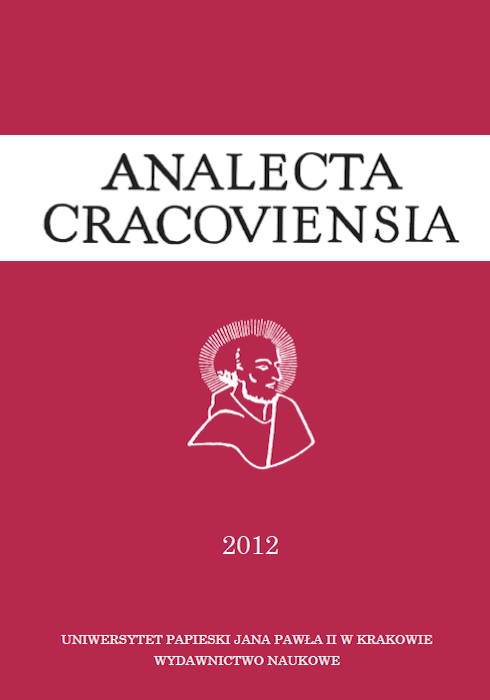Psychologiczna koncepcja poszukiwania sacrum w religijności i duchowości
DOI:
https://doi.org/10.15633/acr.3Słowa kluczowe:
Religiousness, search for the sacred, spiritualityAbstrakt
Nowadays, there is a growing interest in the area of psychology of religion as regards religiousness and spirituality. In the past both terms overlapped substantially which was clearly visible in great spiritual traditions of many religions. Recently, however, spirituality has emerged as a distinct construct. Although, religiousness and spirituality have common characteristics they are generally regarded as related but not identical constructs. Both religiousness and spirituality are embedded within the context of “a search for the sacred” which refers to sacrum. The main difference is that religiousness represents the personal or communal search for the sacred that happens within a traditional and institutionalized context, while spirituality is usually understood as a search for the sacred at the level of the individual. The process of “search” entails the attempt to discover significance. People are goal-directed beings who pursue whatever they hold significant in their lives. The search for sacrum lies in the heart of religiousness and spirituality and can be found at multiple level of analysis: psychological, social, physical, and material. There are four main factors that determine the search for sacrum: developmental stage, culture and upbringing, life events, and activity. Their levels specify one’s religiousness and spirituality.
Pobrania
Opublikowane
Numer
Dział
Licencja
Prawa autorskie (c) 2012 Dariusz Krok

Praca jest udostępniana na licencji Creative Commons Attribution-NonCommercial-NoDerivatives 3.0 Unported License.
Obecnie autorzy publikujący w czasopiśmie udzielają jego wydawcy zgody o następującej treści:
- Autor zachowuje autorskie prawa majątkowe do utworu, a jednocześnie udziela wydawcy czasopisma zgody na jego pierwszą publikację w wersji drukowanej i wersji online na licencji Creative Commons Uznanie autorstwa 4.0 Międzynarodowe oraz zgody na wykonywanie opracowań, w tym przekładów.
- Autor ma możliwość udzielania zgody niewyłącznej na opublikowanie utworu w wersji, która ukazała się w czasopiśmie (np. zamieszczenia go w repozytorium instytucjonalnym lub opublikowania w książce), wraz z informacją o jego pierwszej publikacji w czasopiśmie.
- Autor może umieścić swój utwór online (np. w repozytorium instytucjonalnym lub na swojej stronie internetowej) jeszcze przed zgłoszeniem utworu do czasopisma.

